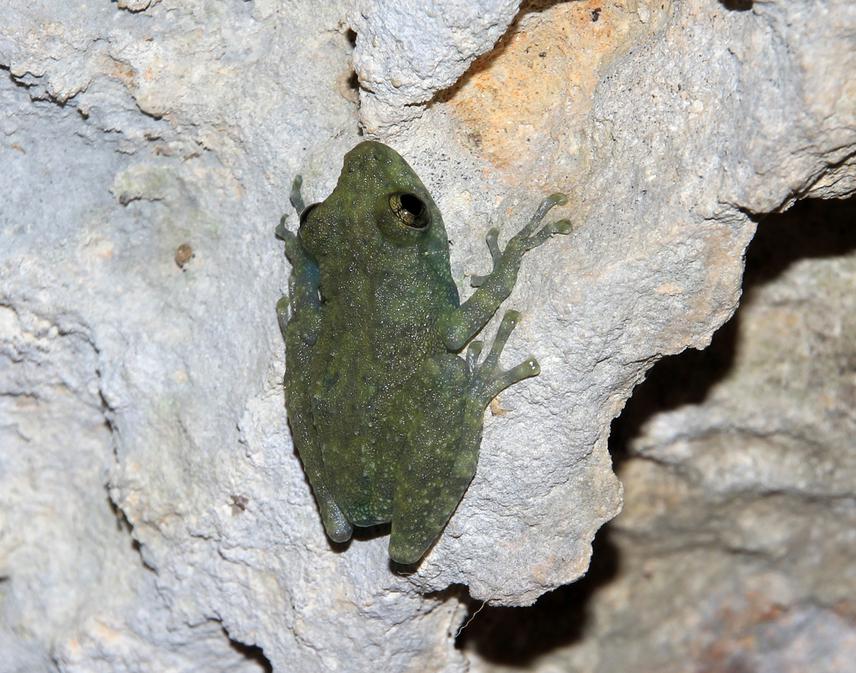Vinh Quang Luu
Other projects
25 Mar 2013
The Diversity of the Reptile Fauna of Hin Nam No National Biodiversity Conservation Area (Laos)
12 Mar 2014
Exploration of the Herpetofauna Diversity in Karst Forests of the Hin Nam No National Protected Area, Central Laos
12 Apr 2016
Taxonomy, Phylogeny, Geography and Evolution of Bent-Toed Geckos (Squamata: Gekkonidae) Along the Annamite Mountain Range: A Case Study in Hin Nam No, Laos
This project aims to clarify evolutionary processes of species boundaries, biogeographical relationships, and habitat partitioning of amphibian and reptile species.

Gracixalus cf. quyeti.
Hin Nam No National Protected Area (HNN) is situated in Khammouane Province, Laos, bordering Phong Nha–Ke Bang National Park (PN-KB) of central Vietnam in the east, and it is a part of the largest continuous limestone ecosystems in Southeast Asia. Vinton & Walston (1999) recorded 46 amphibians and reptiles in HNN. These data showed that the herpetofauna of HNN must be severely underestimated in comparison with 151 species from PN-KB (Luu et al., 2013).
Our studies resulted in 87 amphibian and reptile species recorded for HNN. Remarkably, we discovered two new Cyrtodactylus populations, which morphologically appeared to be similar to the populations from PN-KB, but genetic analyses showed that they were clearly distinct species. Apart from these new cryptic species, other Cyrtodactylus species can be found on both sides of the Annamite Mountain range. These discoveries indicate that some reptile populations in this area only recently diverged via habitat fragmentation and subsequent drift, while others (e.g. Gracixalus quyeti, Trimeresurus truongsonensis) remained stable over evolutionary time on both sides of the Annamite Mountain range (Luu et al. in preparation). The exceptional herpetofauna diversity in HNN offers the chance to investigate the mechanisms underlying high species diversity in tropical karst ecosystems.
Our research in 2013 and 2014 indicated a role of the Annamite Mountain range as an evolutionary barrier, separating neighbouring herptofaunal communities on its western side in Laos from its eastern side in Vietnam, suggesting different evolutionary trajectories. Also population fragmentation may have played a significant role in species evolution as the island-like limestone mountains in Hin Nam No are embedded in a matrix of ancient, intensively cultivated lowland. Further studies are crucially needed to elucidate the evolutionary process of the herpetofauna and of species boundaries in this area, and also to provide a better understanding of their natural history.